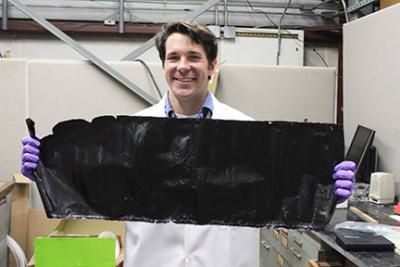ERDC Team Develops a GO-based Water Treatment System
Published on by Water Network Research, Official research team of The Water Network in Academic
Researchers at the U.S. Army Engineer Research and Development Center (ERDC) are developing a water treatment system based on a mix of graphene oxide and a byproduct made from shrimp shells.

Image source: The Vicksburg Post
The ERDC team’s breakthrough was the ability to scale the membranes from the inch and a half diameter membranes other labs throughout the world are working on, to sheets stretching up to two feet long with the potential of making them as big as needed.
“The reason why the rest of the research world is operating at that small scale is because they are using a certain fabrication technology using another material called a nanodisc. It is a small aluminum disc that crosslinks with the graphene oxide through an assembly method,” the team explained. “The problem is they can’t move them out of laboratory scale. It is important to move it out of the laboratory scale because if you can’t make it big, you can’t use it”.
The ERDC team has developed a method to replace the aluminum disc and instead use a byproduct from shrimp shells called chitosan. Their current testing model is said to be using a membrane the size of a cellphone. “You can actually mix Chitosan with graphene oxide and if you mix it a certain way you can make the membranes in any size you want just by a process of letting it dry,” the researchers said. “It basically does the same function the aluminum has. It gives it a structure and allows you to mold it and make a sheet … We can make it as large as we want it.
The project aims to develop an effective method to decontaminate wastewater that’s been used to disinfect soldiers or equipment exposed to biohazards during warfare. The membranes, once their ability to be functional on a larger scale has been proven, could also be used to purify drinking water.
Read full article: The Vicksburg Post
Media
Taxonomy
- Treatment
- Treatment Methods
- Filtration
- Technology
- Wastewater Treatment
- Filtration
- Graphene